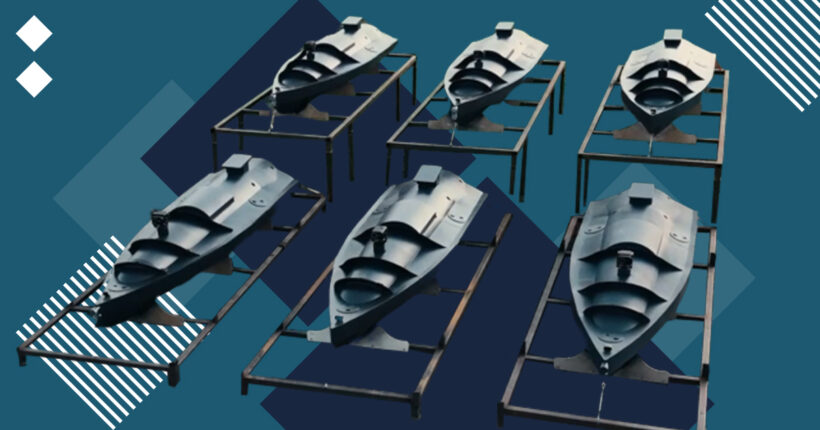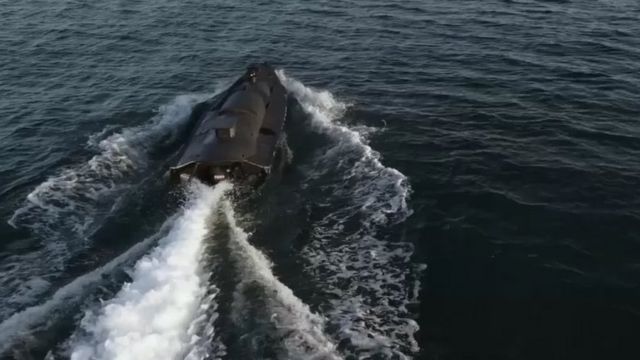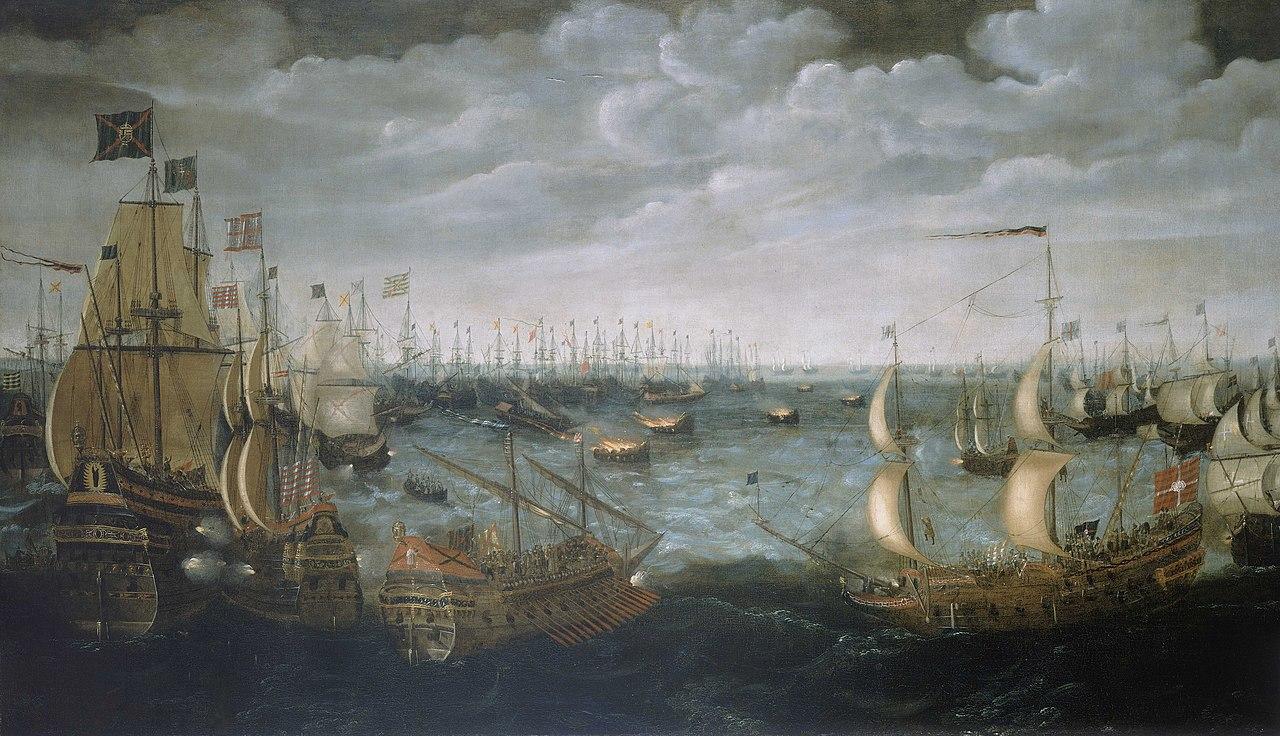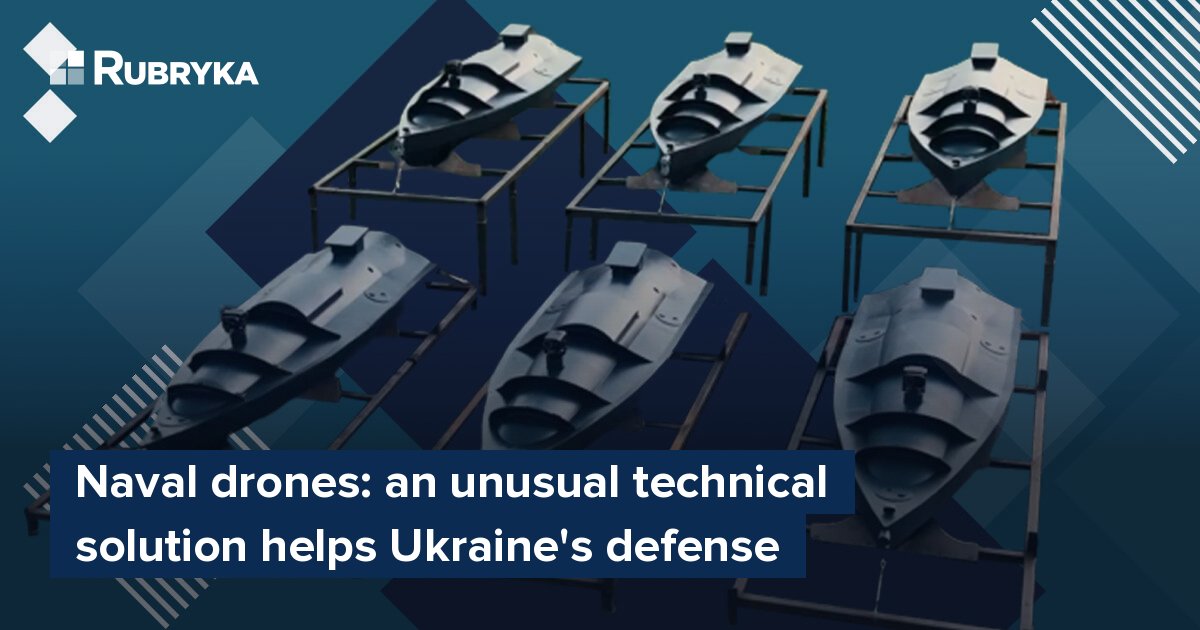
On May 24, Ukrainian soldiers attacked the ship of the Black Sea Fleet of the Russian Federation Ivan Khurs, not just anywhere but 74 kilometers from the Bosphorus. They managed to damage an enemy ship more than 400 kilometers from Ukraine's coast — this was done by a fleet that does not have cruisers or destroyers for a classic naval battle.
Before that, in October 2022, the Ukrainian flotilla attacked Sevastopol Bay: then, it probably managed to hit three Russian ships.
Instead of large ships, the so-called "marine drones" stood out in both operations. Unlike their flying counterparts, very little is known about them, although this is not the first time these machines have been used.
Rubryka, using the information from open sources, explains what kind of drones they are, how they will help Ukraine's counteroffensive, and whether they will be able to unblock Odesa and other ports.
What is the problem?
Thanks to the help of the Ukrainian Defense Industry and volunteers, Ukraine's defense forces are gradually equalizing the balance of forces on land, even though the Russians still have more equipment and ammunition. The F-16 fighter jets will give the Ukrainian Air Force an advantage over the occupiers in the sky.
Only on the Black Sea is everything sadder because the Russians still dominate. The Russian Federation has a squadron of missile-carrying frigates and boats with similar weapons, submarines, and many support ships: from surveillance to minesweepers.
They can be supported by aviation from the territory of occupied Crimea. Ukraine has nothing to contrast — there is not a single large warship capable of going to sea to fight the Russians.
Ukraine can't reach them from the shore either: the Neptune missile has a flight range of 280 kilometers from the shore, and Ukraine never had time to complete the aviation version. This all means that the ships of the Russian Federation could anchor 300 kilometers away, fire missiles at Ukraine, and conduct surveillance with impunity. They also continue to block the roads to Odesa and our other ports.
What is the solution?
Use drones (this time marine)

After all, in ground battles, Ukrainian fighters have long and successfully used drones to equalize forces. Drones are multipurpose — they become reconnaissance planes (searching for the enemy and pointing artillery), bombers (attacking infantry and equipment from above), and even missiles (hitting a target with explosives on board).
The unknown creators of naval drones decided to do the same for the Navy. Of course, Mavik drones will not work in this case, but a kamikaze boat with a remote control that will find Russian ships and ram them like a torpedo is another thing.
These machines debuted in the October 2022 attack on Sevastopol, and a month later, Volodymyr Zelensky officially announced the launch of a new flotilla. Next, the government platform United24 began collecting money for marine drones, and people started inventing creative names for them, such as "Revenge of the Raccoon." The aim was to fundraise for a hundred units. At the same time, United24 also shared the characteristics of the boats. They are 5.5 meters long and weigh up to a ton since, unlike a 23-meter artillery boat, a marine drone does not need a place for a team, weapons, and supplies.
Instead of a crew, it has cameras, an autopilot, and a remote control system. With it, the boat can work in autonomous mode for up to 60 hours and move up to 400 kilometers from the ground station, although Ivan Khurs ship was reached even further. Volunteers Serhii Sternenko and Ihor Lachenkov showed one of these boats in March.
By the way, Ukraine is the first country to revive the idea of kamikaze ships — in the age of sailing, gunpowder-laden gunboats were a formidable weapon against wooden ships.

The British launch firebrands against the Spanish Invincible Armada in 1588. The author of the picture is unknown.
Technological progress helped Ukrainian inventors: the device no longer needs a crew if there is satellite communication and GPS navigation. (branders had a team that evacuated before the ram).
Such a device costs UAH10 million — it will not be able to produce hundreds of them and not save money (like flying kamikaze drones). On the other hand, for the price of two Javelins, Ukraine gets a device capable of hitting an enemy ship 400 kilometers away.
How does it work?
The drones should attack the Russians and drive them into the ports
The main weapon of a kamikaze boat is itself because the device carries 200 kilograms of explosives plus a detonator on board. This is the only weapon option for the drone because the Neptune will not fit even on the larger boats the British are building for the Ukrainian army.
That's why the tactics are appropriate: swim up to the ship inconspicuously — that's why the boats attack mostly at night when it's very difficult to notice a small vessel — and go for a battering ram. However, every operation begins with reconnaissance because the enemy still needs to be found in the open sea or port. Already in close combat, the operators maneuver and try to attack the ship from different directions. Since there are automatic cannons and machine guns on warships, the drones must dodge their fire.
From the point of view of mathematics, the boat is even more powerful than the Neptune missile, whose warhead weighs 150 kilograms. There are also laws of physics, and if there is not a direct hit but an explosion nearby, the impact is weaker (thanks to the same effect, Ukrainians protect artillery from Russian drones). This option is the most likely because it is difficult to get close for a battering ram under the fire of the ship's guns.
Somehow it happened with the Russian reconnaissance ship. The footage shows how one of the boats detonates behind it, and the explosive wave hits Ivan Khurs ship.
The fate of the drone that almost reached the port side remains unknown: did it also explode or simply sink? In short, it was possible to damage the Russian ship but not to sink it. As seen from the satellite, it returned to Sevastopol and stood there, leaning to the right side, probably because of the hit.
At sea, the rules of war are a little different, so the drones have fulfilled the task at least — the damaged ship goes to the port for repairs and, for a certain time, drops out of the war.
"There was one such unit on the Black Sea. It took part in the closing of the shooting range with Neptunes, constantly conducted radio-electronic warfare, and affected Ukraine's communications and radars. Hopefully, it won't for many months now," military commentator Kyrylo Danylchenko commented in his post, adding assumptions about heavy damage to the ship.
That is why marine drones suit the Anti-Access / Area Denial strategy. The idea is to make the sea so dangerous for the Russians that their warships will not go there. Usually, submarines work as a hidden threat, but in the case of Ukraine, they will be replaced by boats.
According to British military observer Lieutenant Colonel Stewart Crawford, naval drone attacks on Russian ships can be a preparation for a counterattack: so that the enemy could not use its Black Sea fleet for missile strikes for as long as possible.
However, this will not solve the problem of shelling and naval blockade
Their main task is to protect the waters of Ukrainian seas and peaceful cities from cruise missiles launched by Russian troops from ships. The fleet will also help unlock the corridor for civilian ships that carry grain for the whole world, the team told United24 about their creations.
However, the "build hundreds of boats and liberate the Black Sea" option will not work because even the most successful Anti-Access/Area Denial option does not guarantee this.
The first problem: it is too difficult to block the sea, as it is not a land where you can take control of roads and settlements. According to the Navy, Ukraine's Black Sea economic zone, which is to be reconquered, is 70 thousand square kilometers — the size of Lithuania.
Therefore, the Russian ship will always have a chance to bypass the boats, and the squadron will be able to repel them, especially during the day, with good visibility. Let's also remember enemy submarines — they don't have to rise to the surface at all, and Russian planes operating from Crimea.
If Ukraine does not guarantee a 100% safe Black Sea for foreigners (it will also have to be cleared of mines), then no one outside the grain corridor will go to Odesa until victory.
It is not easy to stop the missile attacks for good, either. The range of the Calibers allows the Russians to fire even from the Caucasian coast, which is still out of reach for Ukrainian boats (although they will have to relocate the fleet there first).
On the other hand, the next generation of marine drones may also reach there. In April, one of the development teams presented the Toloka device on the Brave 1 platform (a joint project of Ukraine's defense and digital ministries).
In fact, this is a small submarine with remote control, which will be able to monitor the enemy, and, if necessary, turn into a torpedo and hit the Russian ship in the side. It will be extremely difficult to detect and shoot it underwater with onboard guns.
The smallest version (TLK-50) can travel 100 kilometers and carries 20-50 kilograms of explosives. However, according to the developers' forecast, the more powerful model (TLK-400) will have a range of 1,200 kilometers and 500 kilograms of explosives on board (like three Neptune missiles).
Before Ukrainians can dream of a miracle weapon, they should remember that, for now, this is just a drone project that needs to be built, tested, and put into production.
***
Ukrainian sea drones are a good example of how the combination of creativity of engineers, volunteer help, and government support gives results on the battlefield, even when the enemy has more money and equipment.
A very serious reason to remember that the same cooperation is needed in other technical areas. For example, when it comes to flying reconnaissance drones and training their operators or systems to combat drones, which will protect Ukrainian soldiers from Russian UAVs, they, too, should become projects of state importance.
After the victory, sea drones may become an exclusive export product for Ukraine. After all, with their help, even states without a powerful navy will be able to protect their coasts additionally.
Newsletter
Digest of the most interesting news: just about the main thing







